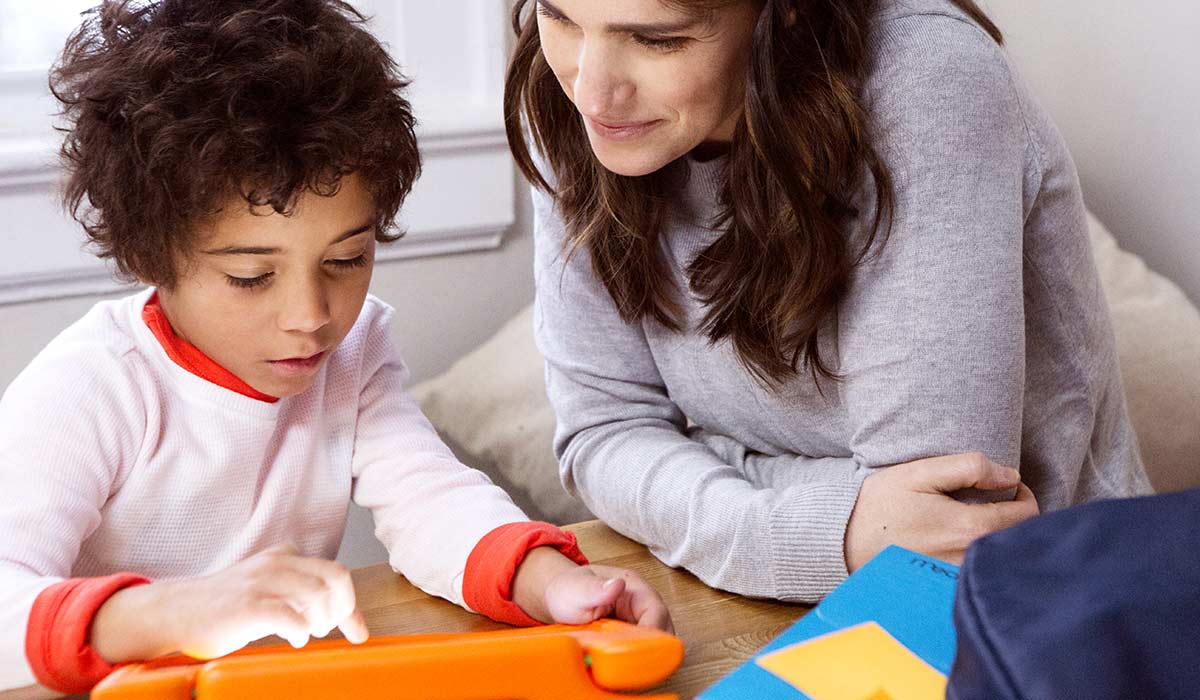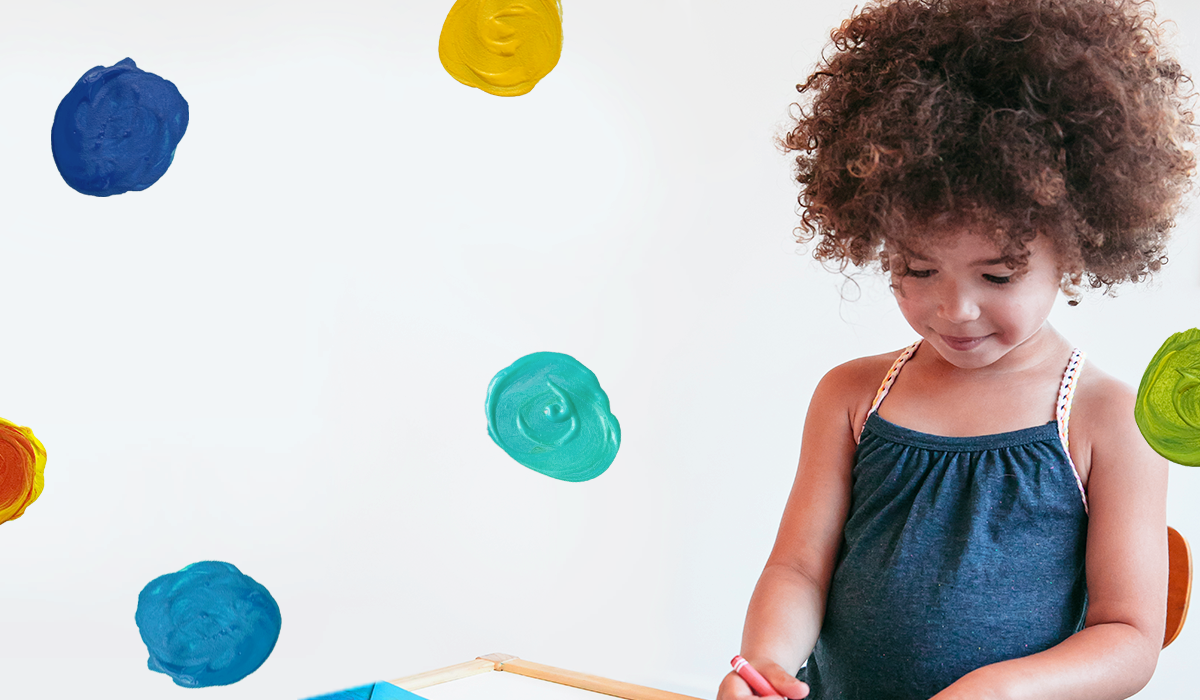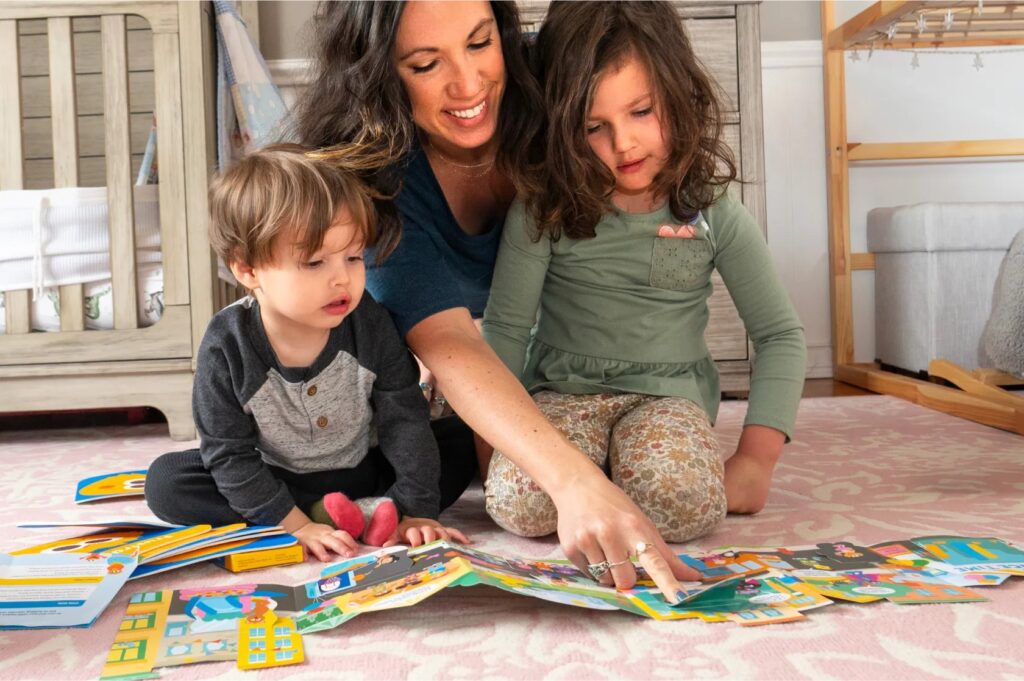What Is Reading Comprehension?
Once your child learns to read, an essential next step is to make sure they understand what they’re reading. This is known as reading comprehension, a crucial skill for building a lifelong love of reading. We don’t want them to simply read a story; we want them to discover that books are magical!
This guide will provide some strategies and tips for you to use to help your child develop strong reading comprehension skills at home.
Table Of Contents
- What Is Reading Comprehension?
- Reading Comprehension Strategies
- Fun And Easy Reading Comprehension Tips
What Is Reading Comprehension?

Reading comprehension is the ability to understand and process the meaning of a text by utilizing information the reader already knows.
To put it in simpler terms, when your child can read something and then discuss what they learned or what happened in the story, they’re demonstrating reading comprehension.
For young readers working on simple storybooks, reading comprehension involves being able to explain what happened in a text, why it might have happened, and what could change if the characters made different choices.
Reading comprehension is also about connecting kids’ own knowledge and experiences to what they learn in new texts. Are there similarities between the new story and their favorite movie? What’s different about what happened in the story and what happens in their daily life?
These are all great questions to consider on the journey toward reading comprehension. But they’re only part of the puzzle!
Reading comprehension is a Core Skill, one of the 5 C’s — along with creativity, critical thinking, curiosity, and character — of the Begin Approach to helping kids thrive in school and life.
Educators mainly target six or seven strategies to assist children in the development of their reading comprehension. Let’s take a look at those now.
Reading Comprehension Strategies
By teaching your child these common strategies, you can help them become more active and engaged readers who better understand and process what they read.
Using these strategies consistently and modeling their use as you read together will help your child pay attention to their comprehension and make adjustments as needed.

Inferring
While reading a text, there are many things that go unsaid. Even though they’re not explicit, there are subtle messages that are implied in-between the lines.
Inference is a very challenging skill, although an important one, so your child might need your help to infer — or read between the lines. Inferring is really about being able to guess what the text is trying to convey by contrasting what isn’t written with what is.
In fiction, when a character acts in a particular way, the author might not tell us what the character is feeling or thinking, but, even so, we can figure it out. Many books with undertones about morality will work along this vein, too.
Your child will pick up these subtleties the more they read. A great way to engage their inferring skills is by asking them questions about what they’re learning (that isn’t stated explicitly in the story) while reading.
This encourages them to think critically about the text and draw conclusions based on their knowledge. It also helps them develop their own perspective on the story and a deeper understanding of the themes and messages within the text.
Inference can also be applied to non-fiction works. When your child reads a news article or informational text, they can infer the author’s perspective or bias by paying attention to the word choice, tone, and evidence presented.
This type of critical thinking helps your child become a more discerning reader and consumer of information.

Questioning
Questions are the great equalizer when it comes to reading! The easiest way to clear up what your child knows, isn’t sure about, or wants to know more about, is by asking and answering questions.
Engaging your child with questions about the text both during and after reading will help build their reading comprehension.
Additionally, questioning allows you to gauge if your child understands what they’re reading and encourages them to think more deeply about the subject.
Any kind of question can get your child’s imagination going! This is one of the best ways to develop reading comprehension, as answering questions about the text encourages kids to consider what they’ve read.
We recommend making your questions follow the “I wonder” form. (I wonder why Pooh did that? I wonder what Paddington is feeling now?) This way, the questioning is a shared investigation rather than a mini-test of what your child knows.
Searching
As children get older, they’re taught to use evidence to support their ideas about the things they’ve read. Learning how to search for the information that supports their analyses (even in a picture book!) is an important part of reading comprehension.
This is a great technique to teach them so that they know where to go when they need to double-check what they’ve learned about a story. Start by having them go back to the text to find the information they’re looking for.
One helpful tip is to teach your child to use contextual clues and keywords when searching for information. This will help them navigate through the text more efficiently.
At first, you’ll need to walk them through the process of selecting the keywords to scan for and going back in the text to find them. However, with time and practice, they’ll become more skilled in finding the evidence to back up their answers.
You can make the search more fun by turning it into a scavenger hunt or detective game. For younger learners, a magnifying glass can add an exciting element to their search. Older children can be challenged to find specific details or quotes within the text as quickly as possible.

Visualizing
Children have the most incredible imaginations! And those imaginations certainly come in handy when trying to develop reading comprehension.
Most kids naturally visualize the things they read in a story. What characters might look like (if they’re not already drawn in front of them) or what they might do in different scenarios, for example.
This is the key to visualization. Using their mental pictures to “see” what happened in the text and translate the events into a consequential, organized summary of the story’s plot helps strengthen your child’s reading comprehension.
At first, your child may need to physically draw the events or create a storyboard to help them visualize and organize their thoughts. As they progress, encourage them to use their imagination without relying on physical aids.
Predicting
When your child makes a prediction, they’re using their critical thinking skills to make an educated guess about what will happen next.
Encourage them to make predictions throughout the reading process, whether before they begin a new chapter or or when they encounter new information. To help them learn this strategy, ask questions such as:
- What do you think will happen next?
- Who do you think the main characters will be?
- Why do you think this character made that decision?
- Can you guess how this problem will be resolved?
After reading, ask your child to think about their predictions. Discuss which ones turned out correctly and which ones did not. This reinforces their comprehension skills and helps them learn to make more accurate predictions in the future.
Summarizing
Summarizing is a crucial part of reading comprehension, as it requires your child to identify the most important parts of a story and retell it in their own words. It helps them better understand the main idea and themes of a story.
To help your child practice summarizing, encourage them to retell the story in their own words after finishing each chapter or section. At first, don’t be surprised if you get a word-for-word retelling; this is completely normal!
As you practice this strategy together, model retelling in a short and succinct way. You can then help your child hone in on the most important bits by asking questions like these:
- What were the most important events in this chapter?
- What do you think is the main idea of this story?
- Can you tell me about this section in one or two sentences?
You can also ask them to draw the important parts of the story or create a visual summary, which can help them creatively organize their thoughts.

Fun And Easy Reading Comprehension Tips
Now that you know some strategies for improving reading comprehension, here are some tips and activities to refer back to as you teach this core skill.
1) Start With The Building Blocks
A strong foundation in the overall components of language is an essential first step to reading comprehension.
Brushing up on phonemic awareness skills, letter recognition, spelling — all of it will be helpful! Since learning is holistic, working on the other skills that contribute to reading will inevitably assist in reading comprehension.
In addition, the less attention a child needs to read the words in a story the more attention they can give to understanding what they are reading!
2) Try Reciprocal Teaching
As noted above, some children get uncomfortable when they realize they are being questioned about things they’ve just read. We get it. Checking for comprehension can feel like being tested, and we know that’s intimidating!
Let your child get in the driver’s seat once in a while. Instead of quizzing them on the text they read, ask them to test you. You can purposely answer questions incorrectly to prompt them to correct you.
You can also question them and pretend to be confused or make predictions about what’s going to happen. Show your child the behavior you want them to emulate by reflecting it back at them!

3) Encourage New Vocabulary
Reading comprehension is a whole lot easier when children understand the meaning of the words they’re reading. But how do you encourage your child to actively learn more advanced words?
We recommend “sponsoring” a few words a week in your house. If you want to try this, pick out a book you’d like to focus on for reading comprehension.
When your child comes across a word they don’t know, jot it down and post it in your house somewhere they’ll see it often. After explaining what the word means, tell them that for every time they use the word properly in a sentence during the week, they get a point!
The goal is to reach a certain amount of points for the week to win. We suggest narrowing it down to three or five new vocabulary words per week. The more accustomed they become to this game, the more new words you can add in.
4) Create A Scavenger Hunt
One of the most fun ways you can incorporate reading comprehension practice into your life is by turning it into an adventure!
If you want to try this with your child, they’ll need to pick out a book to focus on first. Once your child has worked their way through the book, sit down together and sketch out a handful of scenes that they remember from the story.
Then you can go around the house and hang up all the different scenes when they’re not looking. Tell your child it’s a story scavenger hunt and ask them to try and find the pieces of the story.
Once all the pieces are collected, you can help your child organize them into the correct order. This encourages your young learner to put their reading comprehension skills to use. Plus, it’s a blast!
5) Play Reading Comprehension Games
There are plenty of games for building vocabulary you can incorporate into your child’s reading comprehension practice. One of the easiest and most fun options is a tower tumbling game (think Jenga)!
If you want to try this, you’ll need a tower set that you don’t mind writing on. Write a word that might be a bit of a challenge on each tower block (for example, “meander”).
When your child pulls out the block, they have to read the word (with your help if needed), and you can tell them the meaning if they don’t know or remember it. Then have them use the word in a sentence to earn their block (and you do the same!).
They’ll be so excited to see the tower come crashing down that they’ll forget they’re even learning in the first place!

6) Start With Below-Level Books
As mentioned earlier, it’s much harder for your child to focus on comprehension when they’re struggling to decode the words. That’s why starting with books slightly below your child’s reading level is beneficial.
By doing this, you’re allowing them to practice their comprehension skills without being overwhelmed by the text. It also allows them to build confidence and momentum as they progress toward more challenging books.
7) Extend The Text
One way to challenge your child’s comprehension is by having them extend the text. This means taking a story or passage and imagining what might happen next or how the characters’ lives might continue beyond the end of the book.
They can:
- Draw a picture of what happens next
- Write a sequel or a prequel to the story
- Create a new character for the story and explain how they fit in
- Work with a partner to create an interview of the main character
- Make a comic strip of what the next chapter would have been
These activities help with comprehension and encourage creativity and critical thinking skills.
8) Keep A Book Journal

Whenever you read a chapter book aloud to your child, ask them to keep a book journal. This can be as simple as a few pieces of paper stapled together.
After each chapter, ask them to draw or write a few things that happened. They can also include their thoughts and predictions about what might happen next.
At the end of the story, they can go back through their journal and use their entries to help them summarize the entire book.
9) Watch A Movie Version
Another fun activity to reinforce reading comprehension is to watch a movie version of a book your child has read. After watching the video, discuss the similarities and differences between the two mediums.
One great way to do this is with a Venn diagram. Draw two big overlapping circles, then label one “Book” and the other “Movie.” In the overlapping section, write down similar parts, and in the labeled sections, write down differences.
Here are some concepts to think about as you fill in the diagram:
- Characters
- Plot points
- Setting
- Tone/Mood
- Theme
As you discuss the similarities and differences between the movie and the book, ask your child open-ended questions to encourage critical thinking.
For example, “Why do you think the director made this change from the book?” or “Did you prefer the book or the movie? Why?”
10) Integrate Technology

Blended learning, a teaching method that combines traditional classroom instruction with digital resources and activities, is becoming increasingly popular in education. You can use this approach at home by incorporating technology into your child’s reading comprehension activities.
For example, the HOMER app can help your child practice key reading skills, including fluency and comprehension.
They can complete interactive activities personalized to their learning level and improve their reading scores by 74% in just 15 minutes a day. The app also provides progress tracking so you can see how your child is improving over time.
11) Model Comprehension Strategies
Children learn best by example, so make sure to model good reading habits and comprehension strategies for your child.
As you read, verbalize your own thoughts and ask questions about the text. This will show your child how to actively engage with what they are reading.
Here are some specific things you can do:
- Look through the book before you start reading and share predictions or prior knowledge with your child.
- Stop occasionally and summarize what has happened so far or make predictions about what will happen next. Ask your child if they agree or disagree with you.
- Ask “I wonder” questions out loud and answer them with your child. For example, “I wonder why the character made that decision. I think it’s because…”
- Use visual aids like sticky notes to mark important parts of the text or jot down notes or questions.
It may feel strange at first to have a conversation with yourself while reading, but it’ll help your child see how active reading and thinking can improve their comprehension. And as they see you using these strategies consistently, they’ll be more likely to adopt them themselves.
Reading Comprehension, Here We Come!

Above all, reading comprehension is a process! There are many different techniques and strategies to help build your child’s understanding of what they read and why it matters.
Our experts at Begin want to reassure you that these things take time! Reading comprehension is a lifelong process, one that adults still work on every day. There’s no rush — we know that with practice, patience, and fun, your child will get there!
In the meantime, if you ever find yourself in need of a helping hand, give our HOMER app a try for fun, personalized games and activities that engage your child’s reading comprehension.
You can also take a short quiz to see which part of our age- and stage-based learning membership they’re ready for.
We know it takes a village to raise a child, and we’re happy to be a part of yours!













